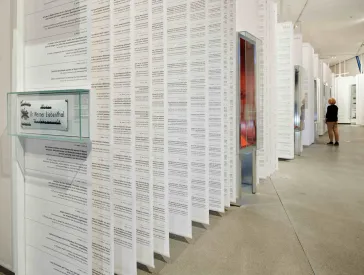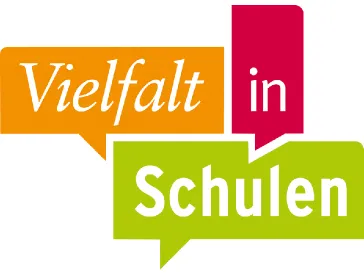Working with Biographies to Increase Cultural Awareness
Working Group Report
There are numerous ways to work with the biographies of past and present people in order to show how different events are inscribed into their lives. Using examples from the Jewish Museum Berlin and a variety of schools, the participants in this workshop discussed their own experiences. How can our life stories be connected with those of others? What identity-related topics are addressed in the process? What are the challenges and pitfalls of working with biographies in heterogeneous groups?
Sarah Hiron, Jewish Museum Berlin, led the workshop with contributions from
- Franziska Bogdanov, member of the Archive Department, Jewish Museum Berlin
- Beate Klammt, education officer, formerly employed by the Anne Frank Center, Berlin
- Rainer Brieske, Albrecht Dürer Academic High School, Berlin
- B.-Traven Secondary School, Berlin
Franziska Bogdanov: Educational Learning in the Archive of the Jewish Museum Berlin
The Jewish Museum Berlin launched its archive education program ten years ago. It is designed for students aged 14 to 17, who work with original archival documents on various topics in German Jewish history, above all Nazism. At the end of the program, the students conduct interviews with the individuals who have donated documents to the museum.
In this working group, Franziska Bogdanov first described the special characteristics of this biographical approach to history: the reconstruction of life stories through analysis of selected documents from the archive’s family collections; and the direct encounter with eyewitnesses to history, who describe their experiences and engage in discussions with the young people.
Next, she reported on the different ways students respond to the biographies and the questions these reactions raise. She questioned to what extent students of foreign descent related more strongly to individual aspects of the biographies and whether their responses differed from those of German students. The key issues here were recognition of historical processes, one’s bearings in history, and identification and empathy in encounters with biographies.
Beate Klammt: First and Foremost, I Am a Human Being – Her Seyden önce insanım
As part of the project “First and Foremost, I Am a Human Being – Her Seyden önce insanım,” the Ann Frank Center in Berlin is using six biographies to examine migration between Turkey and Germany in the period from 1871 to 1961. The people had different reasons to migrate and the circumstances and consequences of migration varied as well.
IN THE BOXES: The materials made available as downloads by the Ann Frank Center at http://www.annefrank.de/mensch/ (in German) provide comprehensive information on the individual life stories.
The personal memories and narratives are supplemented by rich background information. A wide range of methods is introduced to make it easier to use the website content for educational work with young people.
This biographical approach enables students to learn about the complexities of individual life paths and engage not only with others’ lives but also with their own. Exposure to these stories encourages them to question and overcome assumptions and classifications.
The work with one or more of the biographies provides access to all these themes. What is crucial here is the attempt to place the descriptions by the eyewitnesses of history in the proper historical, social, and political text. The view of a single eyewitness is just one of many possible perspectives.
Contact
Dr. Diana Dressel
Head of Education Department
T +49 (0)30 259 93 515
d.dressel@jmberlin.de
Conference Documentation: Schools and Museums Conference Working Groups (19)


